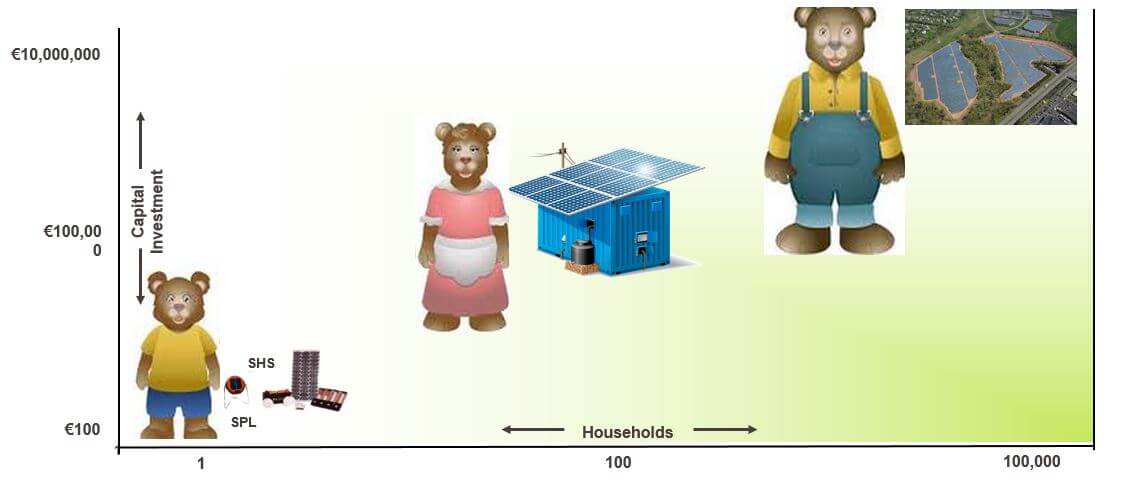
Goldilocks and the three energy access funding bears?
A chasm as defined by the British Dictionary is “a break in continuity; a gap”. In this blog we want to tackle the issue of sustainable development funding for energy access projects and the huge funding gap in the industry. A good analogy is the story of goldilocks and the three bears, do you know it? The protagonist Goldilocks, a precocious little girl enters the house of the three bears and tries the porridge (too hot, too cold, just right), the beds (too soft, too hard, just right) and the chairs; too small, too big, the other is just right.
It just so happens it’s the same in the sustainable development world. Let’s take a look below. In our next blog we’ll look at energy access projects, not from the funding perspective but rather from the point of view of productive energy use and the business model with such projects, along with an exciting announcement. But for now, let’s get back to those bears…
Too big
On one end we have huge, commercial solar/wind/hydro projects with the traditional aid investment via the World Bank, USAID, and others starting in the €10’s of millions – too big! There’s a large segment of the market that these projects don’t cater for because rural people are too dispersed, they won’t get rural people to agree to a power purchase agreement (PPA), etc. Development banks like AFDB, IFC, etc. usually start at about €5 million+ although recently we have seen a reduction to €1M but unfortunately this is for scaling and not piloting.
Too small
On the opposite end we have small home systems and small portable solutions with microfinance/micro lending and/or crowd-funding financing starting at €100 up to maybe €10,000 – too small! The other issue making them an ill fit is that they are not scaleable enough to truly accelerate rural development and enact transformational change nor do they provide a family’s entire energy needs. They tend to be lighting or electricity only without looking at multi-utility approaches like including water or gas.
Just right
And in the middle we have minigrids, flexible solutions to the rural paradigm that scale appropriately and become cash positive with a healthy ROI and a price tag around €100,000 to €1 million – just right! But wait, who is financing these?
Because Mini-grids are a relatively new market, (especially multi-utility ones for rural consumption) there is a lack of standardisation thus causing a ‘perceived risk’ to be quite high. There is also no consistent basis for project development – many different business models and frameworks are currently being trialed. On top of that the industry has no standard Due Diligence & Risk management procedure, nor standardized proposal formats, and all of this results in high transactional costs, which make investors hesitant to invest at this €100K-€1M price point and thus we have the sustainable development funding chasm!
Deepening the chasm is the fact that typical energy access grants in this €100K-€1M range require co-funding of 50% or more. President Obama’s Power Africa initiative via USAID is breaking that barrier slightly, reducing the co-funding to 25% which is helping to close the gap but we are still not there. What will it take to close this chasm? In our next blog we’ll build the business case to hopefully close this chasm and discuss financing for solutions like minigrids that can enact real change in the rural development space. Stay tuned for our next blog…
(Do you want to be notified when the next blog comes out? Subscribe here)
Tweet this blog with: #ImpInv #FundingChasm #minigrid #EnergyAccess #SusDev and tag us @rvesol
